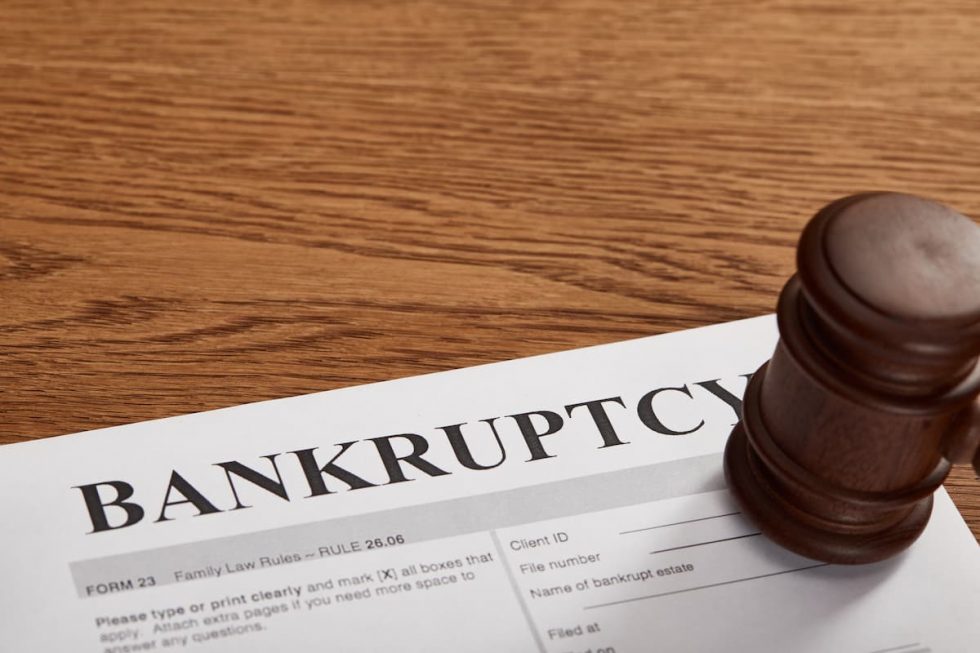With implementation in 2019 Code of Ukraine on bankruptcy procedures (KUzPB) another attempt was made to improve the institutions related to the bankruptcy of legal entities and the insolvency of individuals, the main purpose of which is to restore the solvency of the debtor-legal entity or to declare him bankrupt in order to satisfy the demands of creditors, as well as to restore the solvency of an individual. Applying the norms of this code, the courts carry out law enforcement to ensure the goal of the legislation – to meet the demands of the debtor’s creditors as fully as possible.
“Removing the corporate veil”
This was emphasized not so long ago by the judge of the Supreme Court in the Commercial Court of Cassation Oleksandr Banasko, speaking during a round table dedicated to the Ukrainian and Polish practical application of the institution of subsidiary liability of shareholders and management of the debtor. Analyzing the toolkit for protecting the interests of creditors, defined by the legislator in the Code of Ukraine on Bankruptcy Procedures, the speaker drew attention to the fact that they include, in particular, a moratorium on satisfying creditors’ demands, measures to secure creditors’ demands, the institution of joint and several liability of the head of the debtor, the institution of subsidiary liability, invalidation of deeds, sale of property in the electronic trading system. According to the judge, the legislator laid the doctrine of “removing the corporate veil” as the basis of the institution of subsidiary liability. This doctrine plays a key role in the judicial practice of Ukraine.
In addition, when considering such cases, the courts apply the practice of the ECtHR, in particular the decision in the case “Lekic v. Slovenia” (complaint No. 36480/07 ). Oleksandr Banasko stated that since the introduction of the Criminal Procedure Code, the number of cases involving subsidiary liability has increased significantly. In addition, the dynamics of cases in which decisions are made on the satisfaction of such applications are positive.
Regarding subsidiary liability
According to the current legislation of Ukraine, regulatory regulation is reduced to the fact that the institution of subsidiary liability is applied exclusively in the liquidation procedure. The judge noted that until recently, only the liquidator had the right to apply for subsidiary liability, but the Law of Ukraine dated March 20, 2023 No. 2971-ХХ “On Amendments to Certain Legislative Acts of Ukraine” had the right to apply for such a statement, except for the liquidator, the creditor is also granted, this is the first. And secondly, the legislator took a stricter approach to the issue of subjects of responsibility and defined: in case of establishing the guilt of bankruptcy, the founders (participants, shareholders), managers of the debtor, as well as other persons who, by their actions or inaction, caused the bankruptcy are brought to subsidiary liability debtor to bankruptcy. In addition, the amount of subsidiary liability is determined from the difference between the amount of creditors’ claims and the liquidation mass. Recovered amounts are included in the composition of the liquidation mass and can be used only to satisfy the demands of creditors in the order of precedence established by this law. In the national legal field, subsidiary liability for bringing to bankruptcy is understood as liability for the abuse of subjective civil rights that have caused damage to creditors. One of the first cases reviewed by the Supreme Court regarding subsidiary liability was a case in which the director of the company was held liable in the amount of UAH 9.5 million. The basis for imposing subsidiary liability for the debtor’s obligations on the manager of this enterprise was the illegal withdrawal of funds by the responsible persons from the circulation of the debtor enterprise, which led to his inability to fulfill his monetary obligations (resolution of the Supreme Court of the Supreme Court of January 30, 2018 in case No. 923 /862/15 ).
Oleksandr Banasko also analyzed the resolution of the KGS of the Supreme Court of April 22, 2021 in case No. 915/1624/16 . In this case, the following subjects of subsidiary liability are defined for bankruptcy: founders (participants, shareholders), managers of the debtor, as well as founders and managers of another company, the founder of which was the debtor and to which the sole liquid asset of the latter was transferred.
Placement of subsidiary responsibility on local self-government bodies
In the practice of the Supreme Court, there are a number of cases related to the imposition of subsidiary responsibility on local self-government bodies. If a utility company (the founder of which is a local self-government body) has debt obligations to creditors, the founder makes a decision to withdraw assets from the statutory fund of the utility company and create a new utility company, which actually begins its activities without any liabilities. At the same time, the previous utility remains with debt obligations, but without any assets.
In the resolution of the KGS of the Supreme Court dated December 6, 2022, in case No. 908/802/20 , it is stated that the amount of subsidiary liability for the founders and directors of the company was UAH 80 million. In this case, the courts established that the actions of the defendants in bringing the company to bankruptcy were deliberate and consistent – this is evidenced by the loss of all property belonging to the company, the withdrawal of all funds, the fictitious re-registration of the rights of the participant, the ultimate beneficiary and the head of the company to fictitious persons, hiding from the liquidator financial and business documentation of the company.

The speaker also drew attention to the resolution of the judicial chamber for consideration of bankruptcy cases of the KGS of the Supreme Court of October 20, 2022 in case No. 911/3554/17 (911/401/21) regarding the rate of the court fee for submitting to the commercial court an application (liquidator) for filing subsidiary liability for third parties. The Supreme Court stated that the liquidator’s application to impose subsidiary liability on the person guilty of bringing the debtor to bankruptcy is considered according to the rules of the Code of Civil Procedure of Ukraine within the scope of the bankruptcy case in accordance with the procedure specified in Art. 7 of the Criminal Procedure Code, and the court fee is not paid, since such payment is not provided for by the Law of Ukraine “On Court Fee” .
Oleksandr Banasko emphasized the fact that the application of the institution of subsidiary liability is a constituent element of the principle of undoubted completeness of the liquidator’s actions in the liquidation procedure. “In other words, if the liquidator did not take effective measures to bring the guilty parties to subsidiary liability and did not establish the relevant facts during the case, then the court does not approve the liquidation balance sheet and does not terminate the relevant legal entity,” the speaker summarized.
Subsidiary responsibility: problematic issues
In the end, the Supreme Court judge outlined the problematic issues of subsidiary liability. Among them is insufficient regulatory regulation of this institute, in particular regarding the amount of responsibility and the possibility of its reduction depending on behavior, the size of the share and the presence of influence on the adoption of negative management decisions by founders and managers. Other problematic issues relate to the remuneration of the arbitration administrator depending on the value of the actually received funds, the amount of the court fee and responsibility for the non-handover of accounting and financial documentation by the debtor’s managers and founders, etc.
We would like to add that the round table “Subsidiary liability of shareholders and management: Ukrainian and Polish views” was organized online by the EU project “Law-Justice” together with the Bankruptcy, Restructuring and Insolvency Research Institute (Poland).
Source: Legal Bulletin of Ukraine




